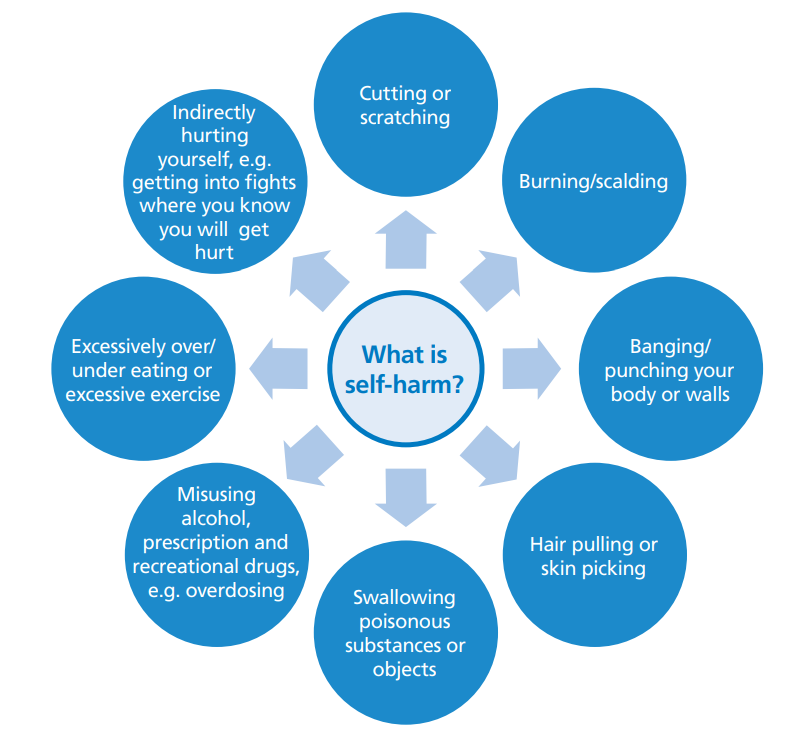Session Two: Understanding Self-Harm
Sometimes young people may feel upset or distressed when hearing about self-harm, especially when discussing different methods of hurting yourself. If you feel this may be distressing for you, speak with a trusted person who can support you.
What is self-harm?
- Self-harm is one way of trying to make unmanageable feelings more manageable.
- Many people self-harm, you are not alone in this.
- People who self-harm do find other ways of managing their feelings.
- Some methods of self-harm may seem more obvious than others.
Exercise six: Highlight the methods you have used to harm yourself within the last month.
What makes someone self-harm?
Exercise seven: Circle the factors that are relevant for you. There is space to add any factors you feel have contributed to you engaging in self-harm.
| Major Life Events |
Life Experiences |
Personal Factors |
|
|
|
Who self-harms?
It's really difficult to say how many young people are self-harming, because lots of people don't share this information with anyone. Here are some stats from YouGov and The Mix (2020).
Effects of Self-Harm
Short-Term effects
- Feeling pain
- Feeling better:
- Relieved
- In control
- Bad thoughts gone away
- Feeling worse:
- Upset
- Worried
- Regretful
- Embarrassed
Long-Term effects
- Pain, infection, having to go to hospital
- Guilt or shame
- Hiding scars
Exercise eight: Using the table above, highlight the effects of your self-harm, and add any more that you can think of.
Why people want to stop self-harming
- "Every time you see where you self-harmed it reminds you of when you did it and you down again."
- "I can't wear short sleeved t-shirts in the summer."
- "It is painful - especially if my wounds get infected."
What are your reasons for wanting to stop or manage your self-harm?
|
|


